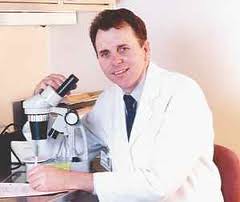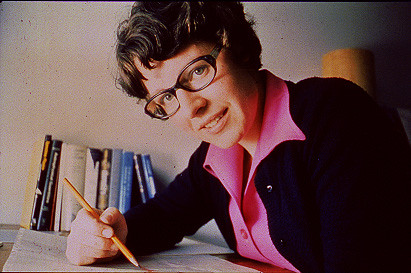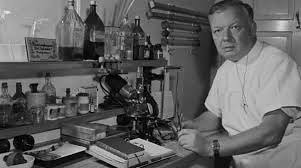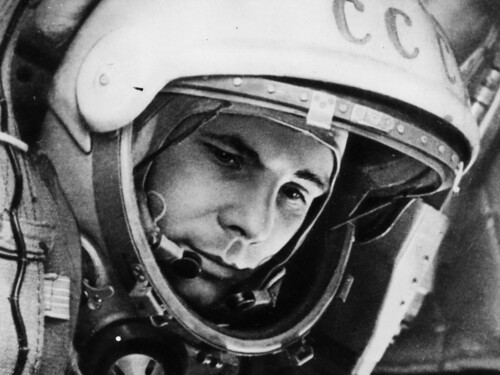Farewell to ‘seamless’: how CIOs can make enterprises agile
 First published in Siemens’ Open Minds magazine, January 2007
First published in Siemens’ Open Minds magazine, January 2007Special to Siemens Enterprise Communications
Google the word ‘seamless’ and you’ll find no fewer than 31 million entries. Some are about fashion, some are about metallurgy, some – perhaps significantly – are about our hopes of better government services. But most are about IT.
That’s a worry. After all, everyone now recognises that the role of the CIO is maturing. There remains a need for technological expertise and insight; but there’s a more urgent need for CIOs to lead organisations into the kind of agility that a new century now demands. [1] So how grown-up is it, in 2007, for CIOs to boast that their empires work seamlessly? To assume their new responsibilities, they need to be more serious than that.
Not long ago, one IT supplier insisted on illustrating its claim to seamlessness with a back view of a woman’s legs, complete with an appropriate pair of stockings. Indeed, computer science has a formal definition of ‘seamless integration’: ‘the addition of a routine or program that works smoothly with an existing system and can be activated and used as if it had been built into the system when the system was put together’. [2] Yet in fact the whole idea of seamlessness is bogus. After all, very few of the world’s tailors have ever made a seamless suit, whether for men or for women.
With a legacy of different voice and computer systems, plus new equipment and software to accommodate as well, CIOs should be sceptical of vendor claims that no telecoms ‘seams’ will ever show up. Yet few really stop to interrogate the concept of seamlessness. The fact that such an idea has been allowed to pass unquestioned for years in the world of IT reveals a lot about the business acumen – or rather the lack of it – possessed by the world’s IT departments.
As enterprise IT matures, operational matters certainly don’t get any simpler. Nevertheless, the task of the savvy CIO is not just to master new and tricky technical problems, but also to rise above them. The urgent need now is to identify just where and how computing and telecoms can deliver new heights of profitability, market share, customer loyalty and general innovation.
It’s time that CIOs buttressed technological competence with a board-level reputation for commercial creativity – and for commercial toughness, too. And it’s time to bid farewell to the old utopia of seamlessness.
A ‘Year Zero’ approach to IT – and an alternative to it
We’ve all heard the arguments from telecoms vendors. It’s rightly observed that there’s a proliferation of hardware devices – especially in mobile. It’s also rightly noted that, left to themselves, legacy systems tend to slow organisations up.
But then, far too often, there’s some sleight of hand. Vendors go on to suggest that
- Open Standards provide only ‘lowest common denominator’ functionality
- Integrating a range of best-in-class IT hardware products and software programs can be expensive.
Both arguments are disingenuous. Open Standards for networking are sophisticated and well defined; those for applications are always advancing – not least, due to the efforts of their vendor critics, who fully cooperate in their development!
Nevertheless, vendors frequently plunge on to suggest an oh-so-surprising alternative to Open Standards: that customers buy their own, fully controllable and seamless suite of IT hardware and software – one that has all the interfaces between its different components already sorted out.
This is a ‘Year Zero’ approach in IT. One wipes the historical slate clean, and starts again. But for an IT vendor to offer a truly seamless, if proprietary, package of IT, it would do best to have no seams at all between any of its different interfaces – and no seams, either, between its different operations or geographical units.
In today’s world of mergers and acquisitions – worth nearly $4 trillion in 2006 and probably more by the end of 2007 – few IT vendors are structured so simply as that. Like most organisations, IT vendors are rarely free of that dreaded ailment, silos.
Even more important, IT purchasers committing themselves to a single, proprietary IT system may be ill prepared to make acquisitions themselves.
As in the domain of fashion, seams are reality in the world of IT today. It’s unlikely that company A taking over company B will do so seamlessly. Like it or not, enterprises live in a multi-vendor environment, where single-sourcing is rarely wise.
Seamlessness is the wrong objective. It makes sense to work with IT that is specially tailored to the ugly reality of an enterprise’s existing installed base of IT investments. At the same time, and balanced against that special tailoring, considerations of cost make it wise to migrate enterprise telecommunications over to Open Standards – especially as many enterprises are already committed to these.
With Open Standards, the focus is not upon wishing seams away. It’s upon ensuring that seams that are strong, simple, robust and secure.
References and footnotes
[1] For a discussion of the historical and business significance of the term ‘agility’, see James Woudhuysen, The globalisation of UK manufacturing and services, 2004-24: toward the agile economy, UK Trade & Investment, 2004
[2] Dictionary of scientific and technical terms, McGraw-Hill, 2003.
Fmr President of Kenya on Trump cutting off foreign aid:
“Why are you crying? It’s not your government, he has no reason to give you anything. This is a wakeup call to say what are we going to do to help ourselves?”
America first is good for the world.
Our entire Green Socialist establishment should be banged up under the ‘Online Safety’ laws, for spreading demonstrable lies (the ‘climate crisis’), causing non-trivial harm to the industrial working class, ordinary drivers, farmers, taxpayers etc, etc.
#Chagos? #Mauritius PM Navin Ramgoolam "is reported to want Starmer to pay £800m a year, plus ‘billions of pounds in #reparations’." (14 January) https://www.spiked-online.com/2025/01/14/the-chagos-islands-deal-is-an-embarrassment/
Now the Torygraph wakes up https://telegraph.co.uk/gift/1ff8abbb462cd609
Read @spikedonline - first with the news!
Articles grouped by Tag
Bookmarks
Innovators I like

Robert Furchgott – discovered that nitric oxide transmits signals within the human body

Barry Marshall – showed that the bacterium Helicobacter pylori is the cause of most peptic ulcers, reversing decades of medical doctrine holding that ulcers were caused by stress, spicy foods, and too much acid

N Joseph Woodland – co-inventor of the barcode

Jocelyn Bell Burnell – she discovered the first radio pulsars

John Tyndall – the man who worked out why the sky was blue

Rosalind Franklin co-discovered the structure of DNA, with Crick and Watson

Rosalyn Sussman Yallow – development of radioimmunoassay (RIA), a method of quantifying minute amounts of biological substances in the body

Jonas Salk – discovery and development of the first successful polio vaccine

John Waterlow – discovered that lack of body potassium causes altitude sickness. First experiment: on himself

Werner Forssmann – the first man to insert a catheter into a human heart: his own

Bruce Bayer – scientist with Kodak whose invention of a colour filter array enabled digital imaging sensors to capture colour

Yuri Gagarin – first man in space. My piece of fandom: http://www.spiked-online.com/newsite/article/10421

Sir Godfrey Hounsfield – inventor, with Robert Ledley, of the CAT scanner

Martin Cooper – inventor of the mobile phone

George Devol – 'father of robotics’ who helped to revolutionise carmaking

Thomas Tuohy – Windscale manager who doused the flames of the 1957 fire

Eugene Polley – TV remote controls



0 comments